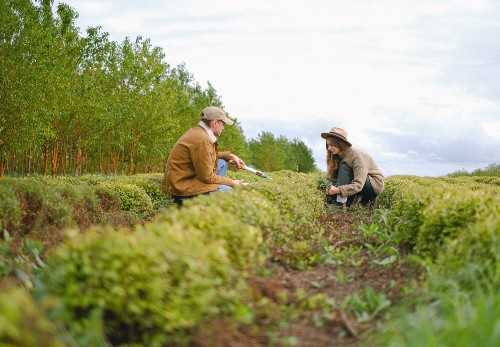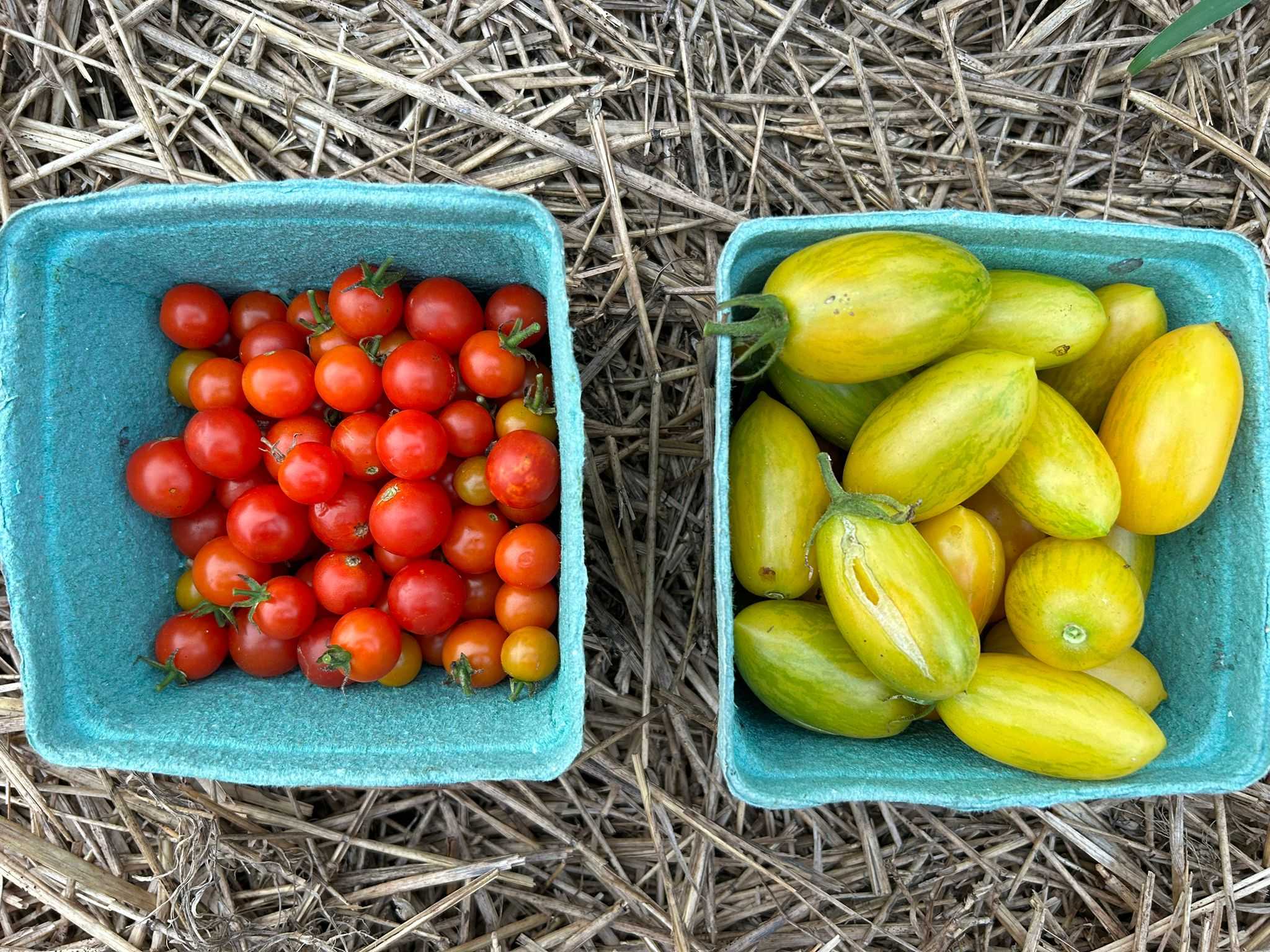
Each spring, the U.S. Department of Agriculture (USDA) opens up applications for its Value-Added Producer Grant (VAPG) program, which can be an invaluable resource for people seeking to introduce their products to new customers and markets. Funds from this matching grant can be used to cover production and marketing costs, or to conduct feasibility studies for future marketing planning. Like most federal grants, though, it’s highly competitive and involves a lengthy application process, which is why CAIC will be offering discounted grant writing services to qualifying VAPG applicants from Maryland, Delaware, Virginia, and the District of Columbia.
Read on for more information about the grant, the ways CAIC can support you, and the application criteria. Then, click here to apply for our grant writing services.
You can also click below to view a recording of our recent informational webinar featuring previous two-time VAPG recipient and grant writer Anita Roberson, who shared tips on budget requests, allowable uses of funding, and other aspects of the grant program.
● A total of 25 hours of work, including the services of a grant writer and a budget specialist. (Note that that can be extended, but services beyond the 25-hour threshold will be separately billable.) This will be a collaborative process, involving weekly or biweekly calls and “homework” assignments from the grant writer that will ensure you’re providing all the necessary information to put together a strong application. Applicants that we select will be asked to sign a contract outlining their responsibilities as well as those of the CAIC team.
● Assistance in completing the MARBIDCO matching funds application. MARBIDCO offers matching grants of up to 15% of the project cost for eligible Maryland producers, which can help applicants meet the VAPG cash-matching requirement. The application process for this grant is separate and much shorter, and the deadline is approximately two weeks before the one for the VAPG program. CAIC will also help qualifying producers put together their MARBIDCO applications. We’re pleased to offer these services at a discounted cost of just $200. Applications will be accepted from the beginning of November through the end of January. (Why such an early deadline? We want to make sure that we have plenty of time to put together the strongest application possible for each producer.)

There are two types of VAPG grants: working capital grants, which last year had a maximum award amount of $250,000; and planning grants, which had a maximum award amount of $75,000. Applicants seeking less than $50,000 in funding can submit a shorter, simplified application.
Working capital grant funds can be spent on “working capital expenses related to producing and marketing a value-added agricultural product,” per the USDA. Essentially, this is money that you can use to support your efforts to bring products to new markets and new customers. Some examples of allowable activities include the costs of processing the value-added product (for example, renting commercial kitchen space or purchasing bottles for the product), as well as those associated with advertising and marketing (for example, paying for an ad campaign on Facebook or paying a graphic designer to create new labels for your product). Producers can also use the funds to pay for a certain percentage of salary- or inventory-related costs.
Planning grants are designed for producers thinking about undertaking new production and marketing activities in the future, and who are looking to gauge the feasibility of doing so. Per the USDA, “examples of planning activities include conducting feasibility studies and developing business plans for processing and marketing the proposed value-added product.”
To learn more about allowable uses of funding for both grant types, click here.
The eligibility criteria for the VAPG program are very broad. To begin, applicants have to make and sell a value-added product that’s created using one of these five methodologies. Provided that they meet one of those criteria, per the USDA, “independent producers, agricultural producer groups, farmer or rancher cooperatives, and majority-controlled producer-based business ventures” are all permitted to apply for the grant. Applicants that fall into certain categories (among others: recent veterans, socially disadvantaged producers, and people whose companies have been in operation for less than 10 years) can receive extra points, too. You can learn more about all of these USDA definitions in last year’s Federal Register notice.
There’s no minimum income requirement for VAPG applicants. However, since this is a cash-matching grant, applicants will have to show in their proposed budgets that they’re able to match USDA funds with their own—either in the form of cash, or in the form of the raw agricultural commodity used to create your value-added product (in-kind matching, which can also include up to 25% of your time)—at the time that the application is being submitted. Though both are permissible, the agency gives preferential consideration to applicants who can demonstrate a cash match.


Last year, the USDA announced in a January 17 Federal Register notice that VAPG applications were open; the agency closed them on April 16. Though the notice of funding opportunity for the FY25 cycle hasn’t come out yet, we anticipate that the timeframe will be roughly the same as it was this past year. CAIC is tracking this closely, so stay tuned for more details from us.
Broadly speaking, working capital grant funds can be spent on “working capital expenses related to producing and marketing a value-added agricultural product,” per the USDA. Some examples of these activities include the costs of processing the value-added product (for example, renting commercial kitchen space or purchasing bottles for the product), as well as those associated with advertising and marketing (for example, paying for an ad campaign on Facebook or paying a graphic designer to create new labels for your product). Producers can also use the funds to pay for a certain percentage of salary- or inventory-related costs. Planning grant funds can be spent on costs associated with planning future production and marketing activities; for instance, “conducting feasibility studies and developing business plans for processing and marketing the proposed value-added product.”
There are a number of limitations on the usage of funds for both grant types; you can read more about them here. CAIC will make sure that all applicants we work with have proposed budgets that only include allowable expenses.

Recently, CAIC hosted an informational webinar with Anita Roberson, a grant writer and previous two-time VAPG awardee. The presentation included tips on budget requests, allowable uses of funding, and other aspects of the grant program; you can view the recording here.
We want to support applicants who have clearly defined goals and ideas for their business growth, and who are able to articulate how they’d use grant funding to work toward those objectives. To ensure that we can work together most effectively, here’s what CAIC will be asking each applicant to provide at the start:
● A one- to two-paragraph narrative description of your company, your value-added product, and your goals/objectives. The VAPG application asks producers to identify specific outcomes that they’ll be using grant funds to work toward, so this should include at least two measurable outcomes that you’d like to achieve through grant funding. (For example, instead of simply saying that you’d like to get your product into more stores, come up with a target number of stores.)
● Basic budget information. This includes the type of grant you’d like to apply for, an estimated amount of money that you’d like to apply for (keeping in mind the cash match requirement and balancing it against your revenue), and a brief description of the way that you’d use the funding if you received it.
● Basic customer and revenue data. You’ll be asked for an estimate of how many customers you’ve had in the past few years, and a target number of customers that you’d like to reach in the next couple of years or so. We’ll also ask for estimates of your company’s revenue over the past couple of years, and a target number that you’d like to reach.
● A marketing plan. USDA requires VAPG applicants seeking $50,000 or more in grant funding to submit a marketing plan. For those looking for less than $50,000, the information contained in a marketing plan can still be used to help us learn more about your company and put together your application, which is why we’re asking everyone to submit one. Your plan doesn’t have to be perfect—it can be in draft form—but we want you to have begun the process of doing market research and defining some specific marketing goals (for example, not just saying “I’d like to grow my company” or “I’d like to get more customers,” but identifying market segments that you’d like to target). Click here for a helpful marketing plan template.
Providing all of this information at the start will help us put together your application more efficiently, which increases your chances of success.
CAIC estimates that we’ll be able to offer these discounted grant writing services to a maximum of 10 people on a first-come, first-served basis. With the limited number of spots available, we suggest applying early!
Mini-Grants up to $5,000 are available for:
– Market Research and Validation of Target Market
– Customer Acquisition
– Product Development Initiatives
– Food Safety Classes
Eligibility
Value-added producers and companies with traction ($20,000 or more in yearly revenue) in Maryland and Delaware are eligible to apply for Mini-Grants. Participants may apply once for each of the categories. Applicants must demonstrate that they have a unique and differentiated product or service that incorporates an aspect of innovation or technology in its production, processing, distribution, or other element of the food supply system.
Applications are accepted on a rolling basis. Award decisions will be made and funds will be available no later than three weeks following the receipt of a completed application.
Application Process
Applicants must submit Mini-Grant proposals by filling out the form at this link. Copy(ies) of quote(s), proposal(s), estimate(s), or any other supporting documents.
CAIC offers access to Subject Matter Experts (SMEs) who can offer authoritative advice based on their deep knowledge and experience in a specific area. See the ADVISORS page of this Web site to learn more about the SMEs who are available to CAIC participants.